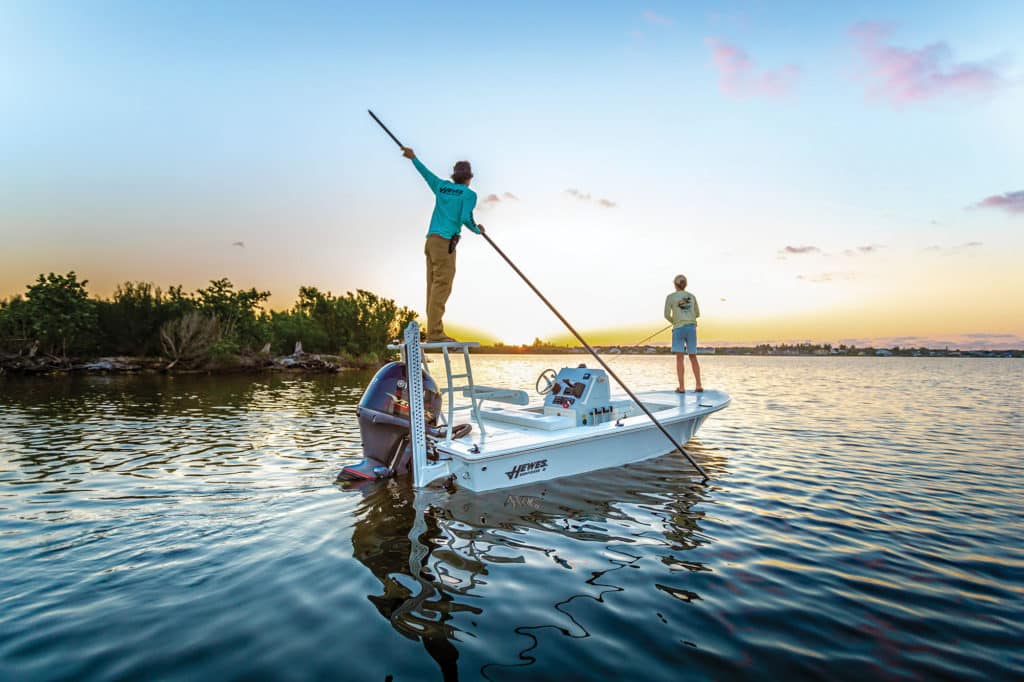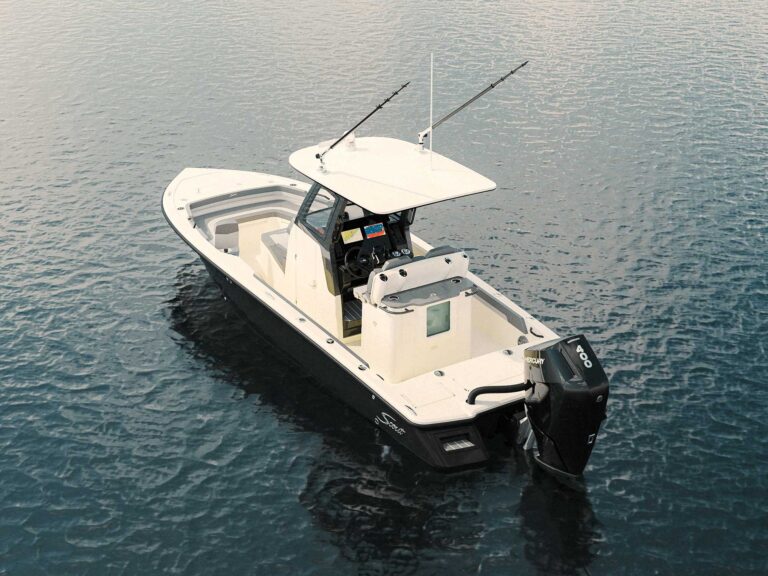
If the allure of stalking gamefish in skinny water beckons too strongly to limit yourself to hiring a flats-fishing guide now and then, it might be time to invest in a flats boat or poling skiff that provides the necessary access every time the itch arises. Not only do they float and run shallower than other boats, but they also excel at navigating the narrow and often meandering channels, tidal creeks, and bayous that take you to the sweet spots of your favorite flats, marshes, and backcountry bays. The choices nowadays are many, so let’s discuss some fundamental attributes to take into account when looking for the right boat to take home and call your own.
Performance and Range
Even for flats anglers, the waters you fish and distances you normally cover should play key roles in your boat selection.
If you fish mostly skinny water within a couple of miles of the boat ramp, you’ll be happy with a hull designed primarily to run and float shallow. But if you must frequently cross expanses of open water —deeper than 3 or 4 feet—to get to and from the fishing, you’d be better off with a hull that cuts through a moderate chop and keeps you comfortable and dry during the ride, even if it requires a bit more water depth to float.
East Cape Boats, Orlando-based builder of premium flats and bay boats, addressed both situations by designing two versions of its popular EVO. “Both hulls feature a high bow with oversize, integrated spray rails, and the freeboard for safe rough-water crossings,” explains company co-owner Kevin Fenn, but the bow of the original EVO, touted by East Cape as the choice for open water and oceanside flats, has more of a “V” and 12 degrees of deadrise. The EVO X has 5 degrees of deadrise, draws a couple of inches less, and requires fewer horses in back than its sibling.
Speaking of which, don’t overlook a boat’s recommended horsepower and its fuel capacity. A 150 hp motor may provide the speed to cover distances in a hurry, but it weighs nearly 500 pounds, and usually requires a tank of about 30 gallons for decent range. Each gallon of gas weighs 6.3 pounds, so the combined heft of the outboard, fuel, two anglers and their gear isn’t likely to let the boat float shallow enough to stalk fish tailing in 8 inches of water.
Onboard Storage
A whopping 40 percent of flats-boat owners surveyed claim to be dissatisfied with their boat’s limited storage, especially for tackle. So take stock of the gear and other essentials you wish to carry, and focus your boat shopping on candidates with room for all those must-have items.
Baitwells are often touted as additional storage on flats boats and poling skiffs. But if your fishing includes live-baiting on more than the rare occasion, it’s best to leave them out when you tally the stowage capacity in any boat you are considering.
Shallow-Minded
A shallow draft is imperative for any boat tasked with getting you within casting range of redfish, bonefish, snook, permit, seatrout or stripers in tidal flats and marshes. To gauge the actual draft of a flats boat or poling skiff, take to the sea trial a wooden dowel with some 18 notches—1 inch apart—at one end. With permission or assistance from the builder or dealer, idle or pole increasingly shallow until the hull starts rubbing bottom. Then stop, dip the notched end of the dowel into the water to measure the distance from the surface to the bottom, and add 1 inch.





